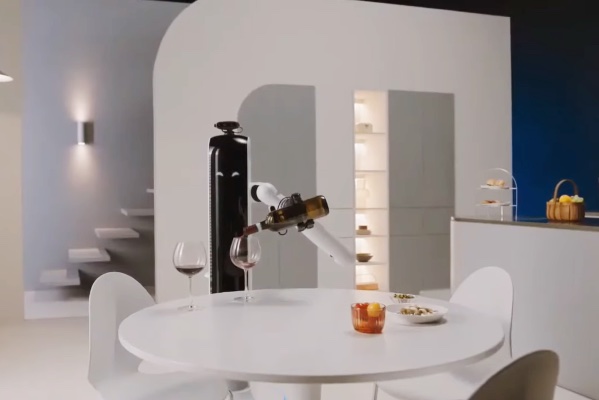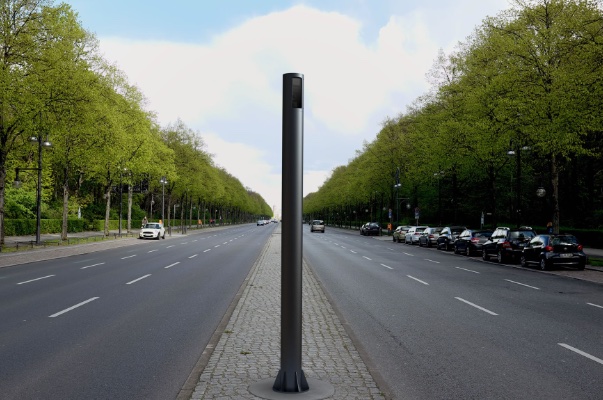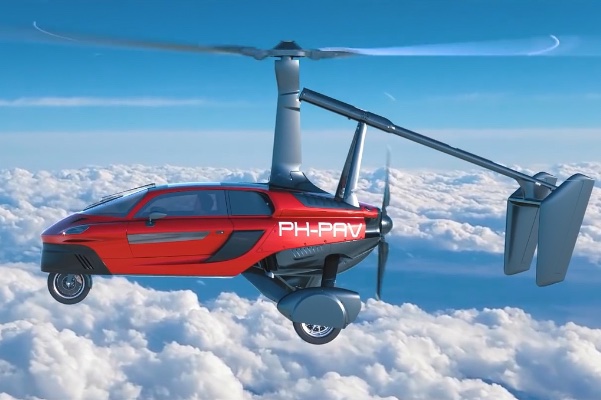ISABEL RUBIO ARROYO | Tungsteno
Flying cars, helmets that ensure a good night's sleep or facemasks with lights and microphones, these are just some of the devices that have been unveiled at CES, the world's largest technology trade show. The event, as well as being the stage on which the most innovative and extravagant devices on the planet are presented, is also a preview of the tech trends that are going to predominate in the coming months. The state of alert provoked by the pandemic has also led to the acceleration of multiple trends related to 5G, robotics, autonomous vehicles and smart cities.
In total, almost 2,000 exhibitors took part in the event, which ran from 11-14 January and featured more than 100 hours of conferences. "CES has shown how the pandemic has accelerated the arc of innovation", said Gary Shapiro, president and CEO of the Consumer Technology Association (CTA), the association that organises the trade show. After a year marked by the coronavirus crisis, digital health was the star theme.
Digital health
Before the pandemic, machines had already begun to surpass humans in diagnosing diseases such as Alzheimer's and cancer. Even so, only 11% of healthcare professionals claimed to use artificial intelligence on a regular basis, according to the US organisation HiMSS Analytics. But this past year, the coronavirus pandemic has accelerated the digitisation of the healthcare sector.
Increasingly, wearables are monitoring heart rates, temperature and blood pressure in real time, from watches and rings to clothing. In addition, robots have been introduced in various hospitals to avoid direct contact with patients, delivering medicines and even performing triage tasks. The CTA expects this trend to continue in 2021, with new tools and technologies coming to market that allow consumers to "take control of their well-being".

Advanced home robots, like the Samsung Bot Handy, are joining the trend to incorporate robotic automation processes. Credit: Samsung.
Robotic butlers
In addition to robots that measure temperature or deliver medicine, machines with curious functions are always unveiled at CES. Previous years have seen a robot that can make a loaf of bread every six minutes and another that carries toilet paper to the bathroom, but this time Samsung’s Bot Handy is the star of the show. It has a single arm with an articulated grip and uses artificial intelligence to put dishes in the dishwasher, set the table and even serve a glass of wine. This machine brings us closer to the idea of robotics that the animated series The Jetsons introduced us to with Rosie, the family’s domestic robot.
Beyond these devices, companies are increasingly opting for robotic process automation software, known as RPA. With this technology, repetitive tasks are optimised, thereby increasing efficiency and reducing production time, for example. In fact, research firm Gartner predicts that global revenues in the latter field will reach almost $2 billion by 2021, an increase of 19.5% over 2020.
The slow rollout of 5G
To date, there are 135 commercial 5G networks worldwide, according to the CTA. The roll-out of this technology began in 2018. While much of Europe, Asia and the Americas already have such networks in place, most of Africa has not even invested in them. Steve Koenig, vice president of research at the CTA, predicts that by 2025, 5G will be in operation across the globe. While it will take time to achieve mass deployment, the promises of this technology are endless: from connecting autonomous cars, machines, appliances and even buildings to enabling complex surgical procedures to be performed remotely using robots.

The CES collects the latest trends in connected devices, such as street furniture with multiple sensors to collect data that is more discreet and respectful of the environment. Credit: Ekin.
Autonomous vehicles
Connected and autonomous cars were once again the focus of the event. Nearly 400 companies unveiled their advances in emergency braking, collision avoidance and parking assistance. They also showcased their concept of the car of the future. If two years ago Hyundai wowed attendees at CES with an electric car with robotic legs that could walk and climb, this year all eyes were on the PAL-V Liberty. This flying car developed by a Dutch company is a hybrid between a traditional vehicle and a helicopter. Other companies such as General Motors envision the flying taxis of the future picking up passengers on the rooftops of buildings.
Smart cities
Every year at CES, the future of smart cities is sketched out. Some of the highlights of 2020 included a device for smart water management, a voice assistant designed for cities and sensors to turn roads into data-generating infrastructure.
This year's edition has generated excitement for some innovations more oriented towards private homes, such as windows that become opaque, guaranteeing privacy, and others that promote environments dedicated to education, such as walls with touch screens that exceed 10 metres in length. In addition, innovations that support smart cities have not been overlooked, such as urban furniture with multiple sensors that collect environmental or traffic data from cities. Connected devices will be the protagonists of the coming years. In fact, the GSMA, the association of mobile network operators, says that between 2019 and 2025, the number of global IoT connections will double to almost 25 billion.
· — —
Tungsteno is a journalism laboratory to scan the essence of innovation. Devised by Materia Publicaciones Científicas for Sacyr’s blog.
